Ceiling chandeliers for low ceilings
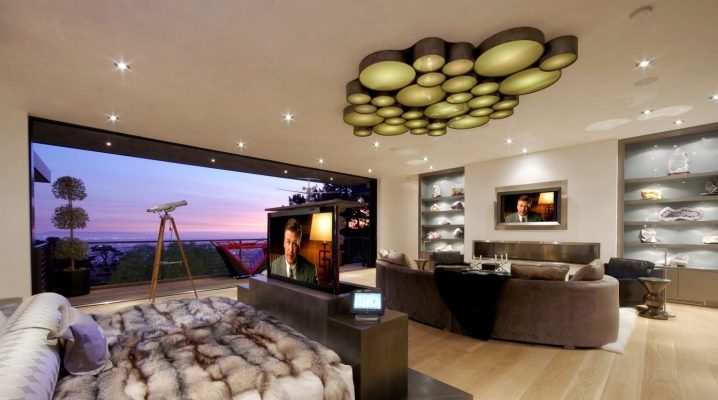
Choosing the right luminaire for low ceilings is not an easy task. Please note the following: in order not to accidentally touch the luminaire, its lower part should be located at a height of about 2 m above the floor level. This means that if the ceiling height is 2.4 m, then only 400 mm is left to accommodate the luminaire. Therefore, it is necessary to choose a light source that will fit into these dimensions and at the same time create a sense of style.
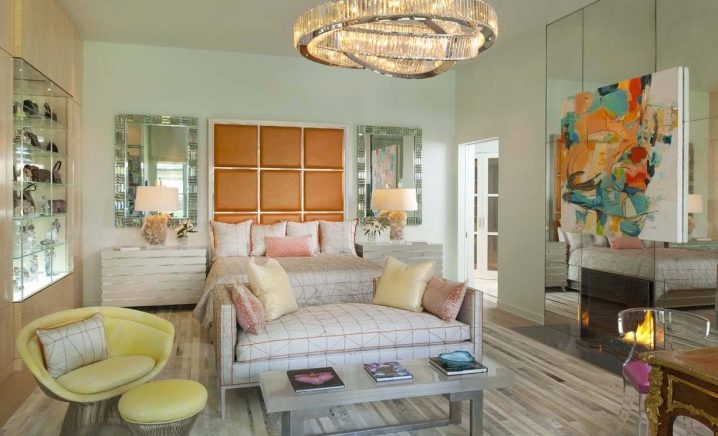
Chandeliers and pendants
Pendant lights are ideal for creating a relaxing and homely atmosphere by combining light and shade. This is a classic of the genre. If you are looking to decorate a small living room in a classic style, then you will probably choose a traditional chandelier. It is well known that chandeliers really help to make a room more elegant. They become the center that, like a sparkling stone, attracts attention and decorates the room. Chandeliers can change the entire look of a room, providing elegant, soft lighting.
It is believed that for a room of standard rectangular proportions, the best solution is to place the chandelier in the center of the room.
But if the room is long and narrow, then two identical chandeliers, located respectively along the ceiling of the hall, will create a very good aesthetic effect.
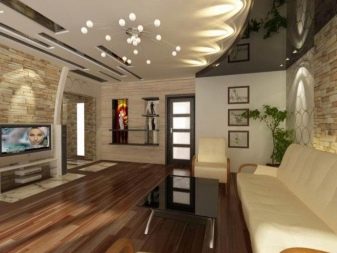

Some rules for choosing chandeliers for low ceilings:
- Not all classic chandeliers look good in the interior of a room with low ceilings. Massive chandeliers with bright colored shades will only emphasize the small size of the room.
- Colored shades let in little light as a result, the lighting in the room will be dim. Better to use matte white or clear shades.
- It is also worth paying attention to the orientation of the shades. They should be directed upward towards the ceiling, then the reflected light will be scattered throughout the room.
- For a room with very low ceilings you can use chandeliers and pendants with special devices that allow you to change the height of the suspension.
- Choosing the right suspension point is also of great importance. Ceiling chandeliers for low ceilings should be located in areas where there is no way of touching them, for example, above the kitchen table, bar or sink, dining table or even a bedside table.
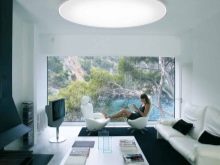
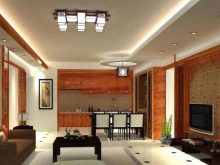
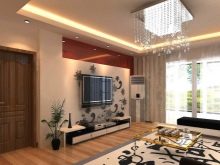
Plafonds
They take up little space on the ceiling and are easy to mount, making them ideal for rooms with low ceilings. Stylish plastic shades are the most budgetary option. For their production, heat-resistant plastic is used, which does not change shape under the influence of high temperatures, and also does not emit harmful substances.
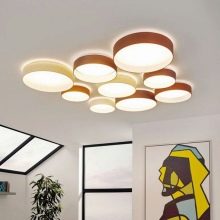
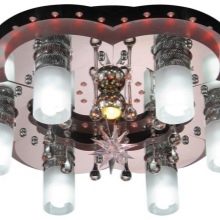
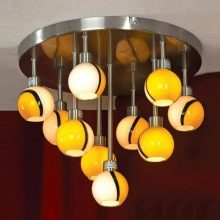
The classic material for the manufacture of ceiling shades is glass. Glass shades have the greatest variety of shapes, which explains their widespread use in design. Stained glass shades made of multi-colored glass have an unusual look. They are able to give a room a special charm, envelop it in romance. There are also wooden plafonds on sale, which create unique chiaroscuro and allow you to realize the most unexpected design ideas.
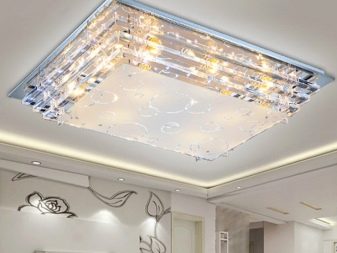
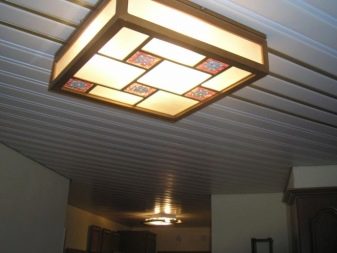
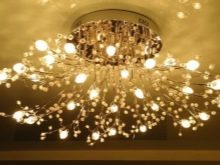

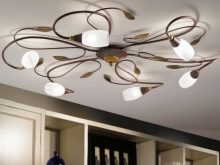
Fluorescent lamps
These bulbs are very efficient when compared to incandescent bulbs. A fluorescent lamp consists of a phosphor-coated glass tube, a small amount of an inert gas (usually argon or krypton), mercury, and a set of electrodes.Contact points on the outside of the tube carry electricity to the lamp.
Fluorescent lamps 2-4 times more efficient than incandescent lamps when working at wavelengthsuseful to people. Thus, they heat up less for the same effective luminous flux. The lamps themselves also last much longer - from 10,000 to 20,000 hours versus 1,000 hours for a conventional lamp.
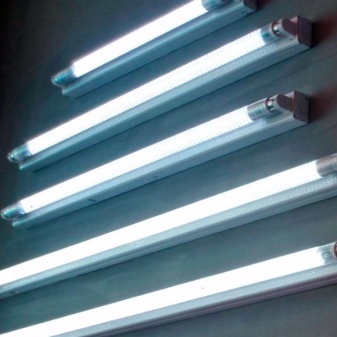
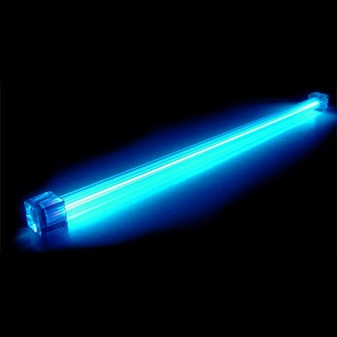
Full-size fluorescent lamps come in several shapes, including straight, U-shaped, and circular configurations. The most common type is a straight fluorescent lamp with a length of about 120 cm. In addition, lamps differ in so-called color temperatures: there can be options from warm (2700 K) to very cool (6500 K).
Cool white (4100 K) is the most common color for fluorescent lamps. Neutral white (3500 K) is becoming popular for office and home use.
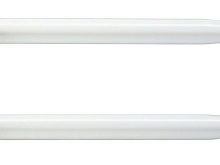

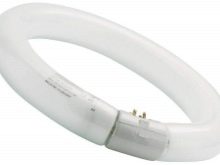
Compact fluorescent lamps
These are miniature lamps that have the following characteristics:
- Standard thread on the base, so they can be installed on almost any lighting fixture;
- Manufactured in various sizes and shapes and used as energy efficient alternatives to incandescent bulbs;
- The power is about 3-4 times the power of incandescent lamps.
The disadvantage is the high cost, however they are very economical in the long run.

Spots
The time when it was fashionable to use a certain number of built-in lamps, placed at the same distance from each other, is long gone. Nowadays, spots are installed where they are needed.
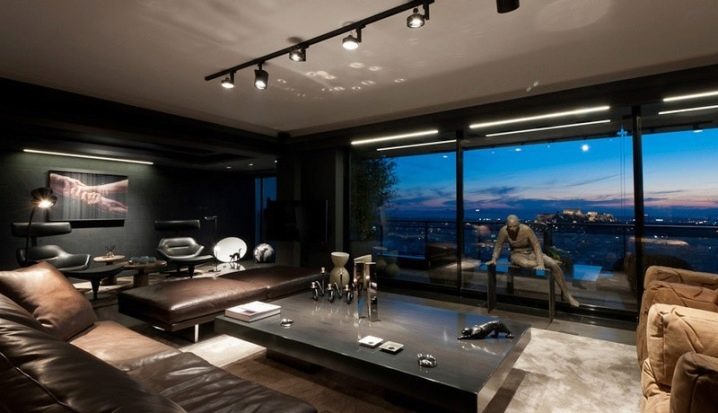
Their number and position depend on several factors:
- Lighting type. Each type has its own requirements. General lighting requires less light, while accents need to look for spots with high luminous efficacy. For example, spots can be ideal for illuminating your favorite paintings and decorations;
- Light flow: some spots have a higher light output. Depending on the function, you define the required luminous flux;
- The angle at which the beam exits the light source. A spot with a small exit angle, for example, is better suited for accent lighting, while models with a large exit angle and therefore a wide beam of light are more suitable for general lighting.
- Distance between the ceiling and the floor or other object that needs to be illuminated.
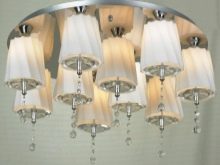
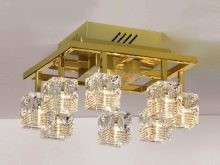
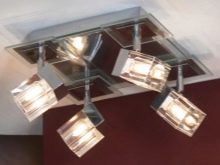
Built-in lights
At the moment, this is one of the most popular types of lighting fixtures. Feeling translucent light helps to create the illusion of a higher ceiling, increase the volume of a small room and give the feeling of a larger space.
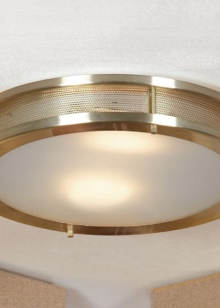
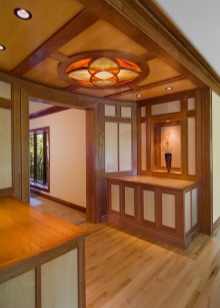

Such lighting is quite versatile, but in areas with limited space and very low ceilings, it is better to use fully recessed lamps (corridors, wardrobes, bathrooms), and partially recessed lamps look better in the kitchen, dining room, bedroom and foyer.
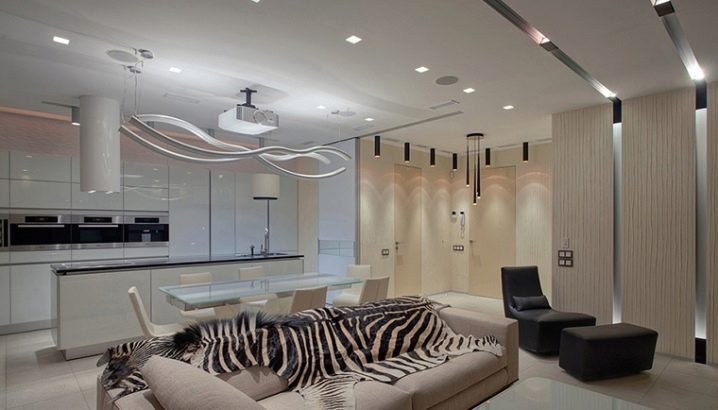
LED panels
It is a lightweight, portable and inexpensive lighting solution. LEDs not only do not take up room space, but are also extremely efficient, modern in design and easy to install. The panels give an even light with no ripple. This eliminates problems with hotspots and glare. Such panels are 5 times more powerful than conventional lamps, but consume significantly less electrical energy. Only one remote control is required to switch multiple panels at the same time.
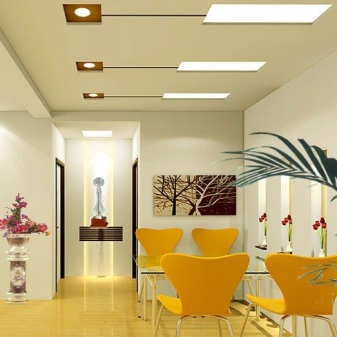
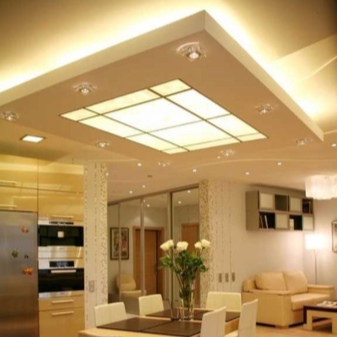
They can be of various shapes, from round to square or rectangular. Used successfully as an elegant design element. New LED technology allows for very thin flat panels, down to 1-1.5 cm. This means they can be installed very close to ceilings in a way that was not available in the past.
There are two varieties of LED flat panel luminaires: edge-lit and direct-lit. They seem similar, but there are some differences. The main difference is that the direct illuminated models are equipped with a light source located at the back of the panel. For this reason, they are slightly thicker, usually 8 to 10 cm.

Edge-lit models are much thinner at around 1 cm thick, allowing for easy installation on a variety of surfaces.
Track lighting
It is a powerful designer tool that works best when creating light accents. The track represents the channel on which the lighting units are installed. It can be easily mounted on any surface.
The beauty of the track system is its versatility. Track design can be expanded or reconfigured, you can move or add holders, change their types, arrange their tracks in different directions, etc.
However, this flexibility can cause some problems.
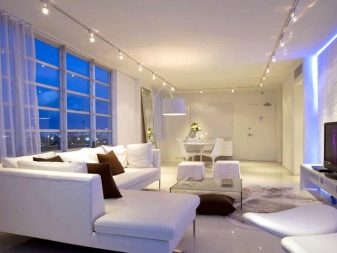
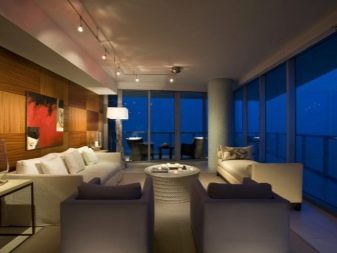
To avoid glare and shadows, track lights should be aimed directly at the work surface. In addition, the track system may appear cluttered, especially in a low-ceilinged room. However, when set up correctly, a well-planned track system can add a lot to the decor.
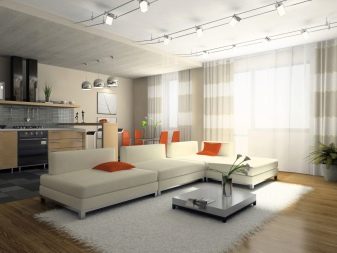

So, if your living space is limited by low ceilings, don't despair. There are many options for successful design for such living spaces, and the right choice of lighting is not the last place.
Read more about chandeliers and lamps for low ceilings in the next video.













The comment was sent successfully.